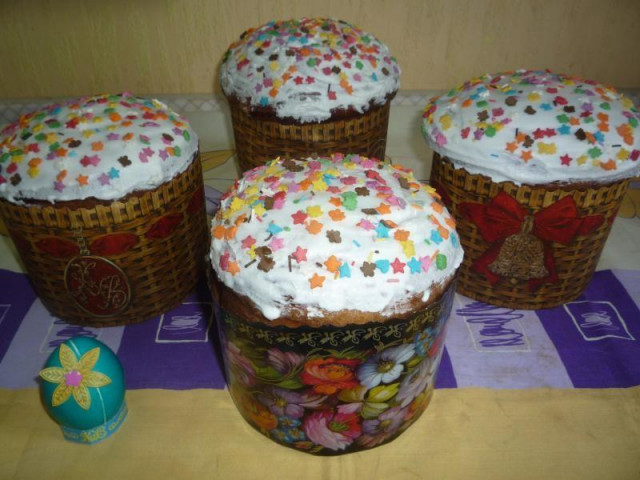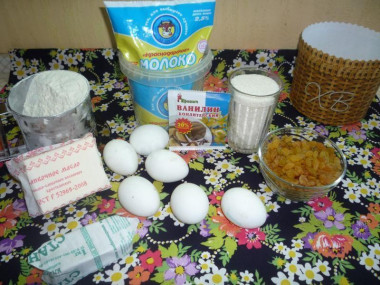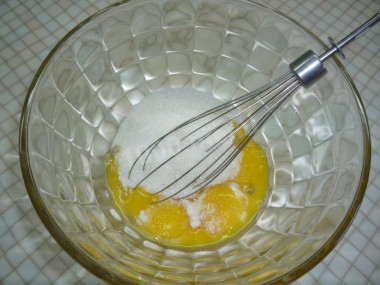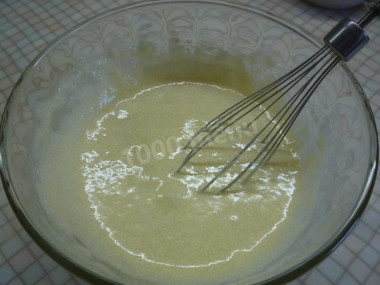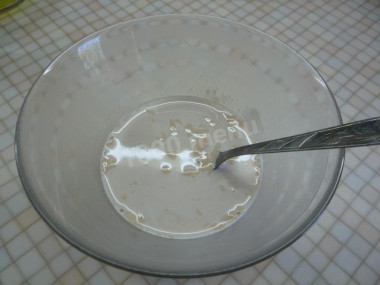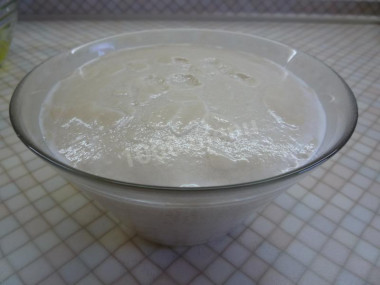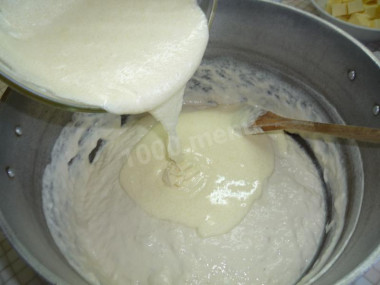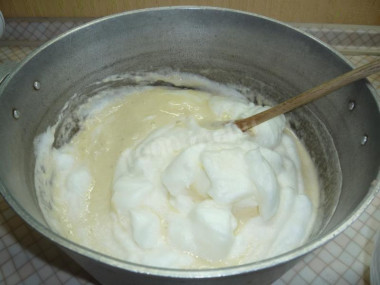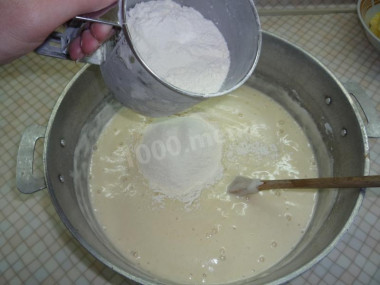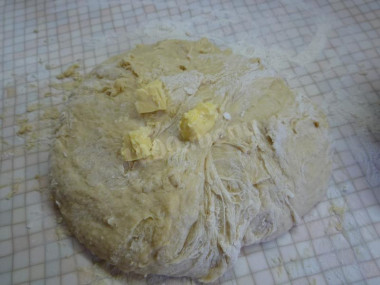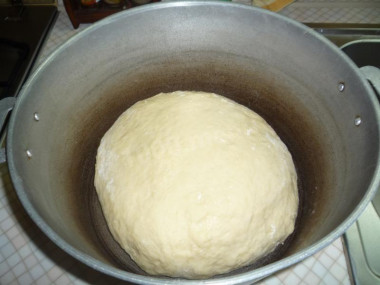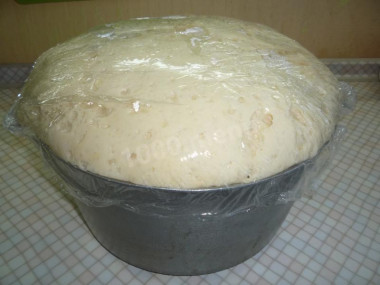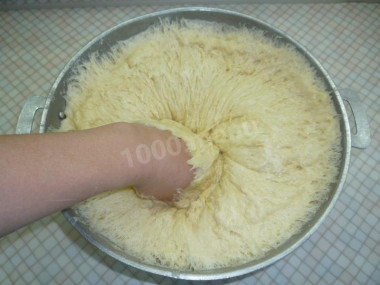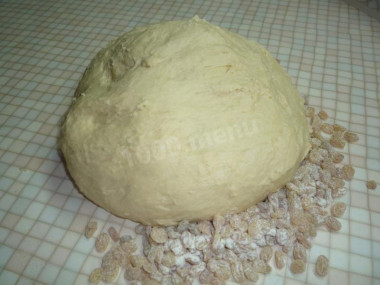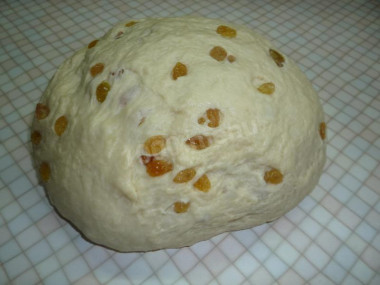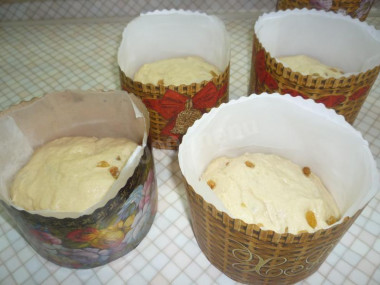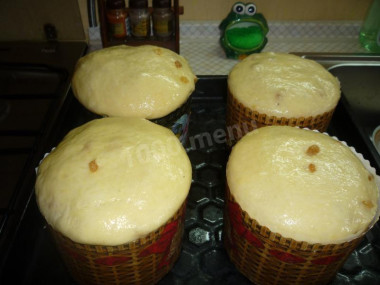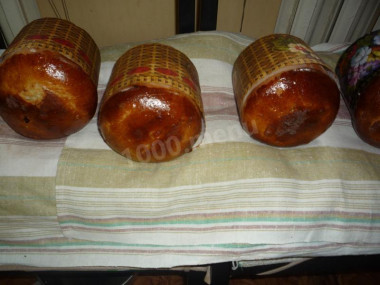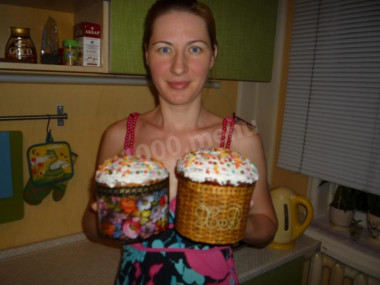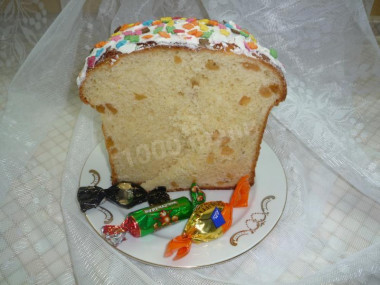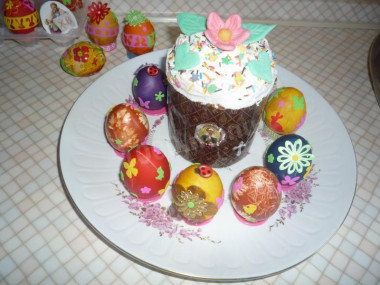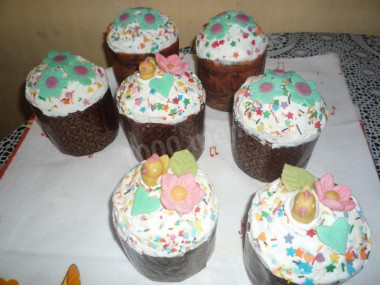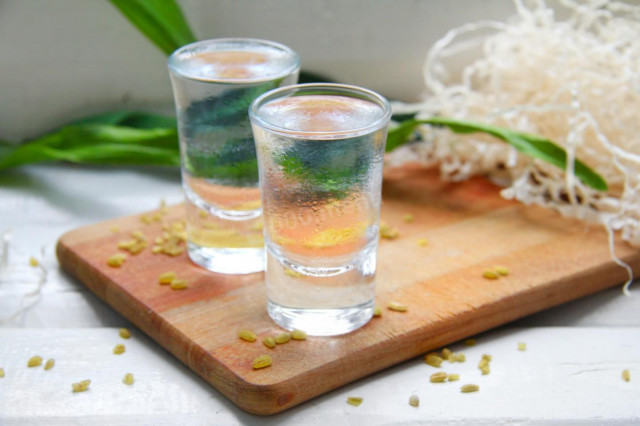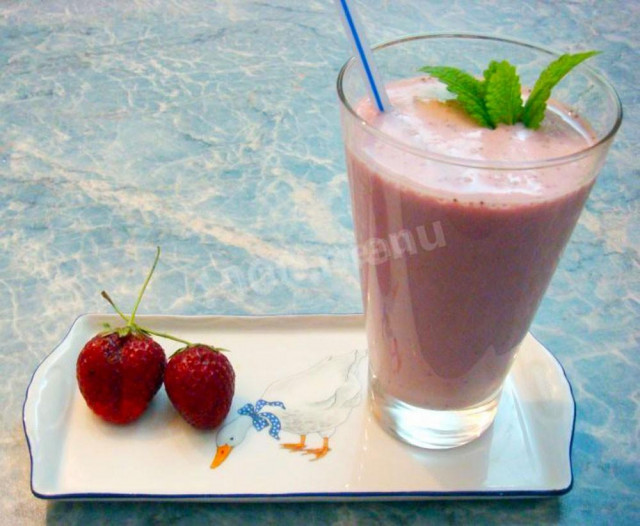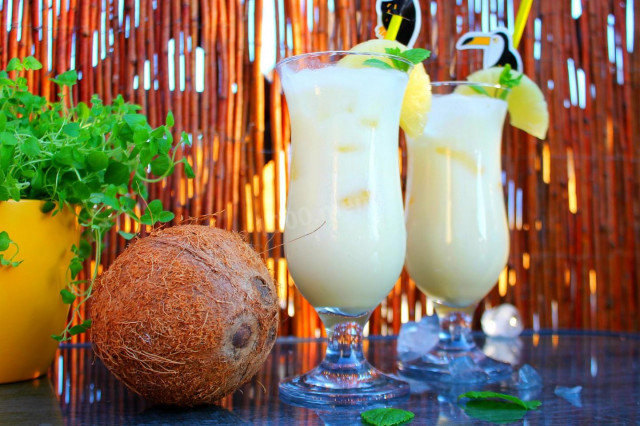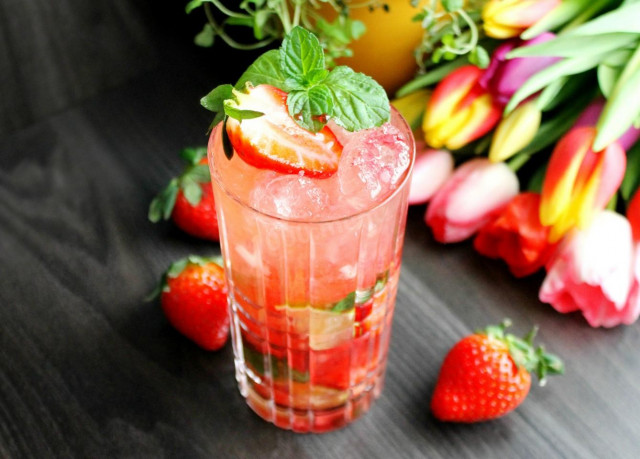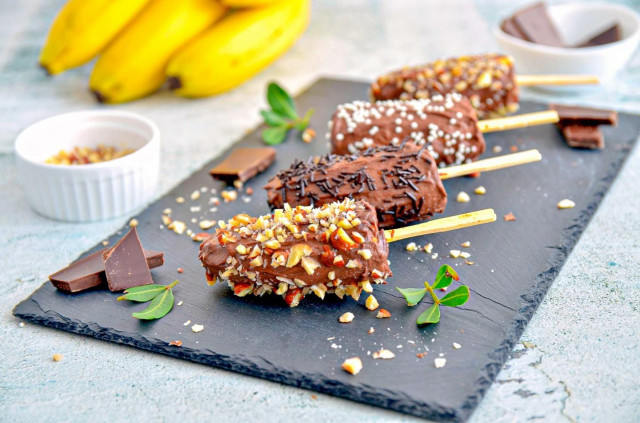Composition / ingredients
Step-by-step cooking
Preparation of products.
Wash the raisins, shake off excess water, spread on a cotton towel and dry.
Sift flour 2-3 times.
Preparation of muffins.
Remove the butter from the refrigerator and leave at room temperature for 1-2 hours. The oil should become soft.
Separate the yolks from the whites of 5 eggs.
Put the yolks and whites in different bowls.
Tighten the bowl with proteins with cling film and put it in the refrigerator or set aside.
Add salt, all sugar (except 1 tablespoon), vanilla sugar to the yolks and grind with a fork or blender until a white homogeneous mass.
If the mass is thick, you can add a little water (~1 tablespoon).
In a small deep bowl, pour 50 ml of warm milk (35-37 ° C), add 1 tablespoon of sugar and mix.
Crumble the yeast into the milk and mix so that the yeast dissolves.
Put the yeast mixture in a warm place for 10-15 minutes. Yeast should foam up and rise like a "cap".
Cooking sourdough.
In a large bowl, sift the flour (~ 150 g), pour the remaining milk (300 ml) and mix.
Stir the foamed yeast with a fork or a small whisk and pour into the milk-flour mixture.
Mix well and put the sourdough in a warm place for ~ 40-60 minutes.
During this time, the sponge should increase in volume by ~ 2 times, "shrink" and begin to fall off.
As soon as the sourdough began to fall off, it is ready.
Add egg yolks with sugar to the approaching sourdough and mix.
Beat the egg whites at the maximum speed of the mixer so that when the bowl is tilted, the whites do not fall out of it.
Add the whipped whites to the dough and mix gently.
In small portions, adding the sifted flour, knead the dough.
First knead it with a spoon in a bowl, then sprinkle the table well with flour and put the dough on it.
It is still quite liquid, so when kneading, in small portions, add the sifted flour and periodically lubricate the dough and hands with vegetable oil.
* Vegetable oil facilitates the kneading process and if the dough begins to spread out on the table, it is easy to assemble it into a single whole by greasing the dough and hands with vegetable oil. There is no such effect from butter.
Continuing to knead the dough, add pieces of softened butter to it and mix it into the dough.
At first, the dough is sticky and viscous, but with prolonged kneading it becomes soft and obedient.
Put the kneaded dough in a large bowl, tighten the bowl with cling film or cover with a towel and put it in a warm place for ~ 3-5 hours.
The dough came up.
It needs to be kneaded by lowering a hand into it, clenched into a fist, and releasing carbon dioxide.
Put on the table and knead for 1-2 minutes.
Put the dough in a large clean bowl, tighten the bowl with cling film and put it away either in a warm place for ~ 3-5 hours, or overnight in the refrigerator.
* If the dough is put in the refrigerator, it is better to use only half (25g of yeast, instead of 50g). With a small amount of yeast and a long time for the dough to rise in the refrigerator, the cakes will turn out much tastier than with rapid fermentation, and there will be no yeast smell in the finished cakes.
Knead the dough that has come up (it becomes quite dense in the refrigerator).
Mix the dough on the table a little (the dough from the refrigerator will warm up during kneading and become more plastic).
Add raisins.
Knead until the raisins are combined with the dough.
Put the dough into the prepared molds, taking 1/3-1/2 of the mold (no more).
Cover the molds with a towel and leave in a warm place for ~ 1-1.5 hours.
For greasing cakes.
Break the egg and separate the white from the yolk.
Set aside the protein for the glaze.
Add ~ 1 tablespoon of water to the yolk and shake with a fork or whisk.
Lubricate the cakes that have come up in the molds with yolk (it is convenient to lubricate with a silicone brush).
Preheat the oven to ~ 180 ° C (the temperature can be set less - depending on the characteristics of the oven).
Bake the cakes for ~ 30-60 minutes (possibly longer). The baking time depends on the temperature and the size of the cakes.
The oven does not need to be opened for the first 15-20 minutes, otherwise the cakes may fall off.
If the surface of the cakes is too intensely browned, but they are not ready yet, you can cover them with foil.
Readiness is checked with a wooden stick. If the stick comes out of the cake without any traces of dough, it is ready.
Ready cakes.
Carefully remove the cakes from the oven.
Hold a knife along the walls of the mold, separating the cake from the mold.
It is convenient to cool the cakes on the pillow (the old way).
The pillow needs to be covered with clean towels, take the cakes out of the molds and put them on the side.
While the cakes are cooling, they need to be turned over periodically (first more often, and then once every 10 minutes) so that their sides do not lie down.
But you can make it easier and cool the cakes on the grill.
Prepare the glaze.
Shake the egg white with a fork until a light foam forms.
Add about half of the powdered sugar and mix with a fork.
Squeeze lemon juice (~ 1 tablespoon), mix.
Gradually adding powdered sugar, prepare the glaze of the desired density (powdered sugar may need more than indicated in the recipe).
Lubricate the cooled cakes with glaze, decorate with candied fruits, marmalade or figured decorations made of mastic, marzipan (or purchased decorations).
Decorate the cakes quickly, as the glaze dries out quite quickly.
Storage of cakes.
Ready-made cakes are best stored in a large saucepan, covered with a towel, covering the pan with a lid.
In a closed container, cakes can be stored for more than a week without getting stale at all, and remaining soft and fragrant, as on the day of baking.
Caloric content of the products possible in the composition of the dish
- Whole cow's milk - 68 kcal/100g
- Milk 3.5% fat content - 64 kcal/100g
- Milk 3.2% fat content - 60 kcal/100g
- Milk 1.5% fat content - 47 kcal/100g
- Concentrated milk 7.5% fat content - 140 kcal/100g
- Milk 2.5% fat content - 54 kcal/100g
- Chicken egg - 157 kcal/100g
- Egg white - 45 kcal/100g
- Egg powder - 542 kcal/100g
- Egg yolk - 352 kcal/100g
- Ostrich egg - 118 kcal/100g
- Pressed yeast - 109 kcal/100g
- Whole durum wheat flour fortified - 333 kcal/100g
- Whole durum wheat flour, universal - 364 kcal/100g
- Flour krupchatka - 348 kcal/100g
- Flour - 325 kcal/100g
- Granulated sugar - 398 kcal/100g
- Sugar - 398 kcal/100g
- Butter 82% - 734 kcal/100g
- Amateur unsalted butter - 709 kcal/100g
- Unsalted peasant butter - 661 kcal/100g
- Peasant salted butter - 652 kcal/100g
- Melted butter - 869 kcal/100g
- Raisins - 280 kcal/100g
- Kishmish - 279 kcal/100g
- Vegetable oil - 873 kcal/100g
- Candied fruits - 216 kcal/100g
- Salt - 0 kcal/100g
- Lemon juice - 16 kcal/100g
- Egg yolks - 352 kcal/100g
- Powdered sugar - 374 kcal/100g
- Vanilla sugar - 379 kcal/100g
- Egg whites - 44 kcal/100g

